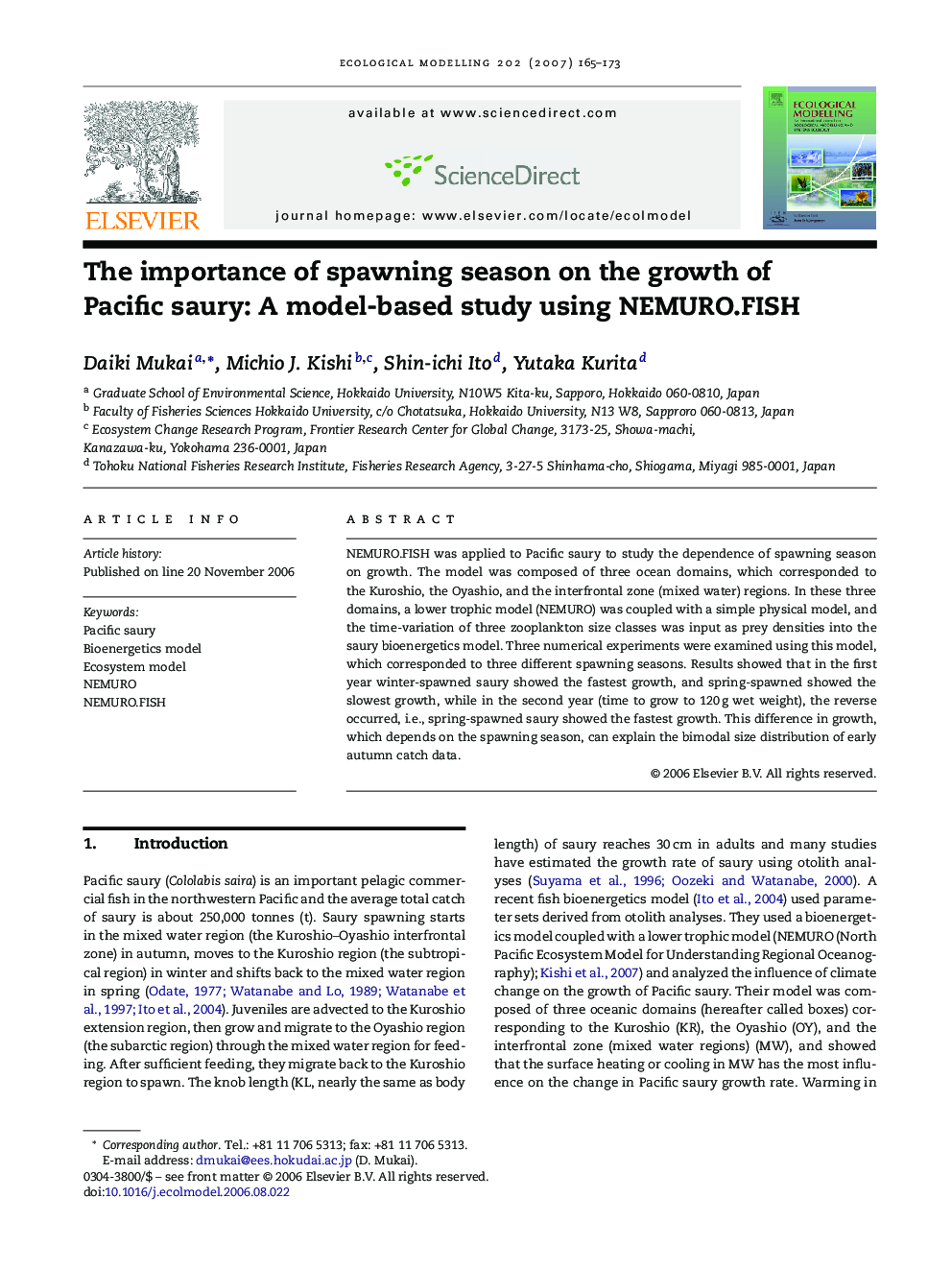| Article ID | Journal | Published Year | Pages | File Type |
|---|---|---|---|---|
| 4378742 | Ecological Modelling | 2007 | 9 Pages |
Abstract
NEMURO.FISH was applied to Pacific saury to study the dependence of spawning season on growth. The model was composed of three ocean domains, which corresponded to the Kuroshio, the Oyashio, and the interfrontal zone (mixed water) regions. In these three domains, a lower trophic model (NEMURO) was coupled with a simple physical model, and the time-variation of three zooplankton size classes was input as prey densities into the saury bioenergetics model. Three numerical experiments were examined using this model, which corresponded to three different spawning seasons. Results showed that in the first year winter-spawned saury showed the fastest growth, and spring-spawned showed the slowest growth, while in the second year (time to grow to 120Â g wet weight), the reverse occurred, i.e., spring-spawned saury showed the fastest growth. This difference in growth, which depends on the spawning season, can explain the bimodal size distribution of early autumn catch data.
Related Topics
Life Sciences
Agricultural and Biological Sciences
Ecology, Evolution, Behavior and Systematics
Authors
Daiki Mukai, Michio J. Kishi, Shin-ichi Ito, Yutaka Kurita,
